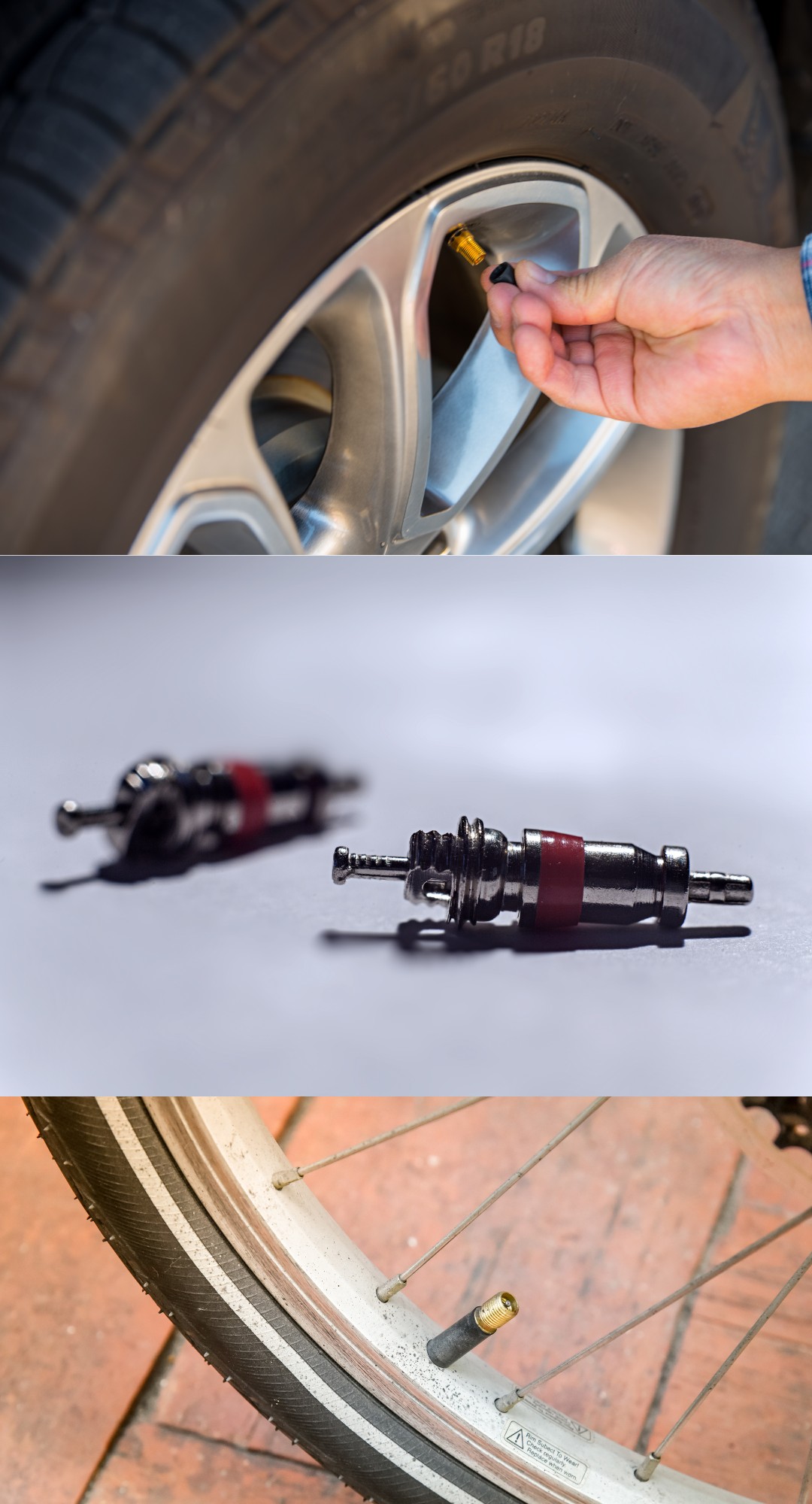There are some differences between bicycle tire valves and automobile tire valves in terms of design and use, mainly in the following areas:
- Size and type: Bicycle tire valves are usually shorter and thinner, and generally come in two types: regular models use blue or black generic valves, while high-pressure road bikes (road bikes) usually use thinner Presta valves. Car tire valves, on the other hand, are longer and are usually generic car valves.
- Pressure Requirements: Bicycle tire pressures are relatively low, typically between 30-100 psi (pounds-force/square inch), while automotive tire pressures are usually above 30-40 psi.
- Applicable Vehicles: Bicycle tire valves are suitable for small vehicles such as bicycles and motorcycles, while automotive tire valves are suitable for large vehicles such as cars and trucks.
- Tools: Presta valves usually require a special spool tool to inflate, while regular valves can be inflated with a regular air cylinder. Car tire valves, on the other hand, usually do not require the use of additional tools.
- TPMS Function: Some modern cars are equipped with Tire Pressure Monitoring Systems (TPMS), which require a valve with a sensor to monitor tire pressure. However, bicycles are generally not equipped with such systems.
Despite these differences between bicycle and automobile tire valves, they both serve the same basic function of allowing air to enter the tire and adjusting the tire pressure to ensure optimal performance and stability while the vehicle is on the road.
